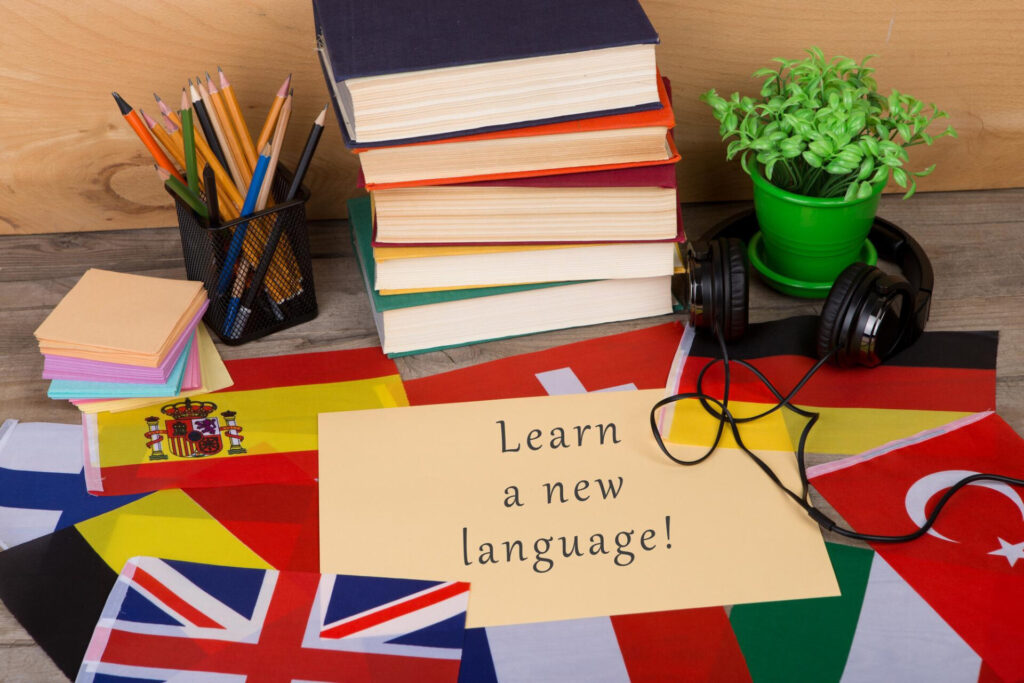Why You Can Learn a New Language Faster Than You Think
What If Fluency Didn’t Take Years?
Most people assume learning a new language is a long, drawn-out process—something that takes years of study, endless grammar drills, and maybe even living abroad. But the truth is: you can learn a new language fast—and not just basic phrases, but real, working fluency.
The secret? It’s not about raw talent or having extra free time. It’s about using smarter methods, focusing on what actually works, and building a system that fits your life.
This article brings together the most effective fast language learning methods, powered by research, technology, and proven psychological principles. Whether you’re learning for travel, career, or self-growth, you’ll find practical strategies that go beyond textbooks and give real results.
The Shortcut Most Learners Miss
If you’ve tried learning before but gave up—or never even started because it felt too overwhelming—you’re not alone. The good news is, you probably weren’t the problem. The approach was.
By focusing on high-impact techniques—like language learning hacks, immersion alternatives, and AI-powered tools—you can cut out the fluff and focus on what delivers results fast.
“Fluency doesn’t come from learning everything. It comes from learning the right things in the right way.”
What You’ll Find in This Guide
This isn’t a generic list of “top 10 apps.” Instead, you’ll find:
✔️ Mindset shifts that unlock rapid learning
✔️ Techniques used by polyglots to gain fluency fast
✔️ Smart routines you can fit into even the busiest schedule
✔️ Tools and apps that work with your brain—not against it
✔️ Creative ways to practice daily without getting bored
Whether you’re a total beginner or restarting after a break, this guide will show you how to learn a language quickly—and enjoy the process.
Let’s break the myth of “slow learning” and explore what actually works. Ready? Let’s dive in.

The Mindset for Success
Overcoming the Fear of Making Mistakes
One of the biggest barriers to learning a language quickly is the fear of making mistakes. Many learners hesitate to speak because they worry about sounding foolish or getting words wrong. However, making mistakes is not just part of the learning process—it’s essential for progress.
To shift your mindset, consider the following:
✔️ Mistakes are proof of learning. Every time you make an error and correct it, you reinforce the correct usage in your brain.
✔️ Fluency comes from practice, not perfection. Native speakers don’t expect perfection from learners. In fact, they often appreciate the effort and are happy to help.
✔️ Communicating is more important than being grammatically perfect. If you can get your message across, you are already succeeding. Grammar can be refined over time.
One effective strategy to overcome fear is “safe practice”—engaging in controlled environments like speaking to a language partner or using AI-powered conversation tools before jumping into real-world interactions.
Developing a Growth Mindset for Language Learning
A growth mindset, a concept developed by psychologist Carol Dweck, is crucial for learning languages quickly. It’s the belief that abilities can be developed through dedication and effort. Those with a growth mindset view challenges as opportunities rather than obstacles.
To cultivate this mindset:
✔️ Embrace challenges. Instead of avoiding difficult conversations, see them as chances to improve.
✔️ Celebrate small wins. Each new word, phrase, or successful conversation is progress. Acknowledge and celebrate them.
✔️ Replace “I can’t” with “I can’t yet.” This simple shift in language reinforces the idea that improvement is always possible.
✔️ Learn from feedback. Instead of feeling discouraged when corrected, see it as valuable input for growth.
By maintaining a positive and adaptable mindset, learners can accelerate their progress and remain motivated throughout the journey.
Motivation vs. Discipline: What Really Works?
Many people start learning a language with high motivation, only to lose interest after a few weeks. The key to long-term success isn’t just motivation—it’s discipline.
✔️ Motivation is what gets you started. It comes from excitement about the language, the culture, or the benefits of fluency.
✔️ Discipline is what keeps you going. It ensures that you continue practicing even on days when motivation is low.
To maintain both:
✔️ Create a routine. Set a fixed time each day for language learning, even if it’s just 15 minutes.
✔️ Set clear goals. Instead of vague goals like “I want to learn Spanish,” aim for specific targets like “I will have a five-minute conversation in Spanish by next month.”
✔️ Use accountability. Find a language partner, join an online community, or use habit-tracking apps to stay consistent.
✔️ Make learning enjoyable. Watch movies, listen to music, or play games in your target language to keep things fun.
By focusing on steady progress rather than bursts of motivation, learners can develop the discipline needed for rapid language acquisition.

Key Techniques for Rapid Learning
The 80/20 Rule in Language Acquisition
The Pareto Principle, also known as the 80/20 rule, states that 80% of results come from 20% of the effort. When applied to language learning, this means that focusing on the most frequently used words and structures will yield the fastest results.
How can you use the 80/20 rule to master a language quickly?
✔️ Prioritize high-frequency words. Studies show that the 1,000 most common words in any language make up over 80% of everyday speech. Focus on learning these first.
✔️ Master essential grammar first. Instead of memorizing complex rules, learn the most frequently used tenses and sentence structures.
✔️ Concentrate on real-world usage. Learn words and phrases that you’ll actually use in conversations, rather than obscure vocabulary.
Example: The Most Common English Words
| Rank | Word | Rank | Word |
|---|---|---|---|
| 1 | the | 6 | you |
| 2 | be | 7 | that |
| 3 | to | 8 | it |
| 4 | of | 9 | he |
| 5 | and | 10 | was |
The same principle applies to any language. Instead of memorizing rare words, focus on those you’ll encounter daily.
Spaced Repetition: The Science of Long-Term Retention
One of the biggest challenges in language learning is retaining vocabulary over time. The spaced repetition system (SRS) is a scientifically proven method that helps learners remember words and phrases more effectively.
✔️ How It Works
- When you first learn a word, you review it frequently.
- As you become familiar with it, reviews are spaced further apart.
- The brain strengthens memories by recalling information just before forgetting it.
✔️ Best Tools for Spaced Repetition
- Anki – A customizable flashcard app that adapts to your learning pace.
- Quizlet – Offers interactive games and quizzes with spaced repetition.
- Memrise – Uses spaced repetition combined with mnemonic techniques.
By using SRS, learners can memorize thousands of words with minimal effort, ensuring that vocabulary sticks long-term.
Active vs. Passive Learning: Finding the Balance
To learn a language quickly, it’s crucial to strike a balance between active and passive learning.
✔️ Active Learning (Faster but requires effort)
- Speaking, writing, and engaging in conversations.
- Practicing grammar exercises.
- Taking quizzes and using flashcards.
✔️ Passive Learning (Easier but takes longer)
- Watching movies and listening to music.
- Reading books and articles.
- Absorbing language through exposure.
Best approach? Combine both! For example, listen to a podcast in your target language (passive) and then summarize it in writing (active).
Immersion Without Traveling: How to Simulate a Native Environment
Many people believe that the only way to learn a language quickly is to live in a country where it’s spoken. While immersion is effective, you can create an immersive environment from anywhere.
✔️ Change your phone and apps to your target language.
✔️ Follow social media accounts that post in your target language.
✔️ Join online communities where people speak the language.
✔️ Listen to music, podcasts, and audiobooks daily.
✔️ Talk to AI chatbots or voice assistants in your target language.
By surrounding yourself with the language every day, you accelerate learning without needing to relocate.
The Power of Chunking: Learning Phrases Instead of Words
Instead of memorizing individual words, learn entire phrases (“chunks”) that you can use in real conversations.
✔️ Example:
❌ Word-by-word: “to go” (идти), “restaurant” (ресторан), “hungry” (голодный)
✔️ Chunk: “I’m going to a restaurant because I’m hungry.”
Why does chunking work?
- It helps learners think in full sentences rather than translating word by word.
- It reinforces correct grammar and natural phrasing.
- It makes speaking more automatic and fluent.
By focusing on chunks, learners can speak naturally much faster than by memorizing isolated vocabulary.

Effective Speaking and Listening Strategies
Shadowing: Mimicking to Master Pronunciation
One of the fastest ways to improve speaking skills is through shadowing, a technique developed by linguist Alexander Arguelles. It involves listening to native speakers and repeating what they say in real time.
How to Practice Shadowing Effectively
✔️ Choose clear audio – Start with slow, well-articulated speech, like language-learning podcasts or audiobooks.
✔️ Listen and repeat immediately – Try to mimic the rhythm, intonation, and pronunciation as closely as possible.
✔️ Use transcripts – Read along while shadowing to connect sounds with written words.
✔️ Record yourself – Compare your pronunciation to the native speaker and adjust accordingly.
By practicing shadowing daily, learners train their mouths and ears to naturally produce and recognize the language, leading to faster fluency.
The Art of Thinking in a New Language
One of the biggest obstacles to fluency is translating thoughts from your native language instead of thinking directly in the target language. This slows down speaking speed and makes conversations feel unnatural.
How to Train Your Brain to Think in Another Language
✔️ Label objects around you – Instead of thinking “chair” in English and translating, just think “silla” (Spanish) immediately.
✔️ Use simple inner monologues – Describe your surroundings in your target language, e.g., “I need to buy milk” → “Je dois acheter du lait” (French).
✔️ React in the language – When something surprises you, try saying “Wow!” in your target language.
✔️ Use a language diary – Write down daily thoughts in your target language to reinforce thinking patterns.
By practicing these techniques, learners reduce mental translation time and increase their ability to speak naturally.
Improving Listening Skills Through Context and Exposure
Understanding native speakers can be challenging, especially when they speak quickly. The key to improving listening skills is exposure and contextual learning.
How to Improve Listening Comprehension
✔️ Start with slow audio – Gradually increase speed as comprehension improves.
✔️ Watch with subtitles, then without – First, use subtitles in your target language. Later, remove them to test understanding.
✔️ Listen for keywords, not every word – Instead of trying to understand 100%, focus on recognizing key words and guessing meaning from context.
✔️ Listen to different accents – Exposure to various dialects improves adaptability and comprehension.
By consistently listening to native content, learners become more comfortable with real-world conversations and different speech patterns.
Using AI and Speech Recognition Tools to Enhance Pronunciation
Technology has made it easier than ever to practice speaking and receive instant feedback. AI-powered tools can help learners refine their pronunciation and speaking skills.
Best AI Tools for Language Learning
✔️ Speech recognition apps – Apps like Elsa Speak, Google Assistant, and iTalki AI analyze pronunciation and suggest improvements.
✔️ Chatbots – AI-based chatbots like ChatGPT or Duolingo’s AI conversations allow for speaking practice without pressure.
✔️ Voice dictation – Try speaking into your phone’s voice assistant. If it recognizes your words correctly, your pronunciation is improving!
✔️ Record and compare – Use apps to record yourself and compare your pronunciation to native speakers.
By leveraging AI, learners can practice speaking anytime, anywhere, accelerating fluency without needing a language partner.
Accelerating Vocabulary and Grammar Mastery
High-Frequency Words: Learning the Essentials First
Many language learners make the mistake of trying to memorize long vocabulary lists without prioritization. However, research shows that the top 1,000 words in any language cover around 80% of everyday speech. Learning these high-frequency words first significantly accelerates comprehension and communication.
How to Focus on High-Frequency Words
✔️ Use frequency lists – Websites like Wiktionary and language learning apps provide ranked word lists.
✔️ Learn words in context – Instead of isolated words, learn them in sentences or common phrases.
✔️ Focus on verbs and connectors – Essential verbs like “go,” “have,” “want,” and connectors like “because,” “but,” “so” make sentences more fluid.
✔️ Prioritize words for your personal needs – If learning for travel, focus on words related to directions, food, and transportation.
Example: High-Frequency Words in English vs. Spanish
| English | Spanish | Example Sentence |
|---|---|---|
| go | ir | I go to school → Voy a la escuela |
| want | querer | I want coffee → Quiero café |
| have | tener | I have a car → Tengo un coche |
| because | porque | I eat because I’m hungry → Como porque tengo hambre |
By focusing on these foundational words, learners start speaking and understanding faster, avoiding the overwhelm of unnecessary vocabulary.
Grammar Hacks for Faster Fluency
Grammar is often a major hurdle in language learning. Instead of memorizing complex rules, focus on the most commonly used grammatical structures first.
Essential Grammar Rules to Learn First
✔️ Present tense before past/future – You can communicate most things using the present tense alone.
✔️ Subject-verb-object (SVO) structure – Many languages follow this simple pattern, making it a useful starting point.
✔️ Avoid excessive conjugations – Instead of memorizing every verb form, learn common sentence structures (e.g., “I want to go” works in most situations).
✔️ Use templates – Learn sentence patterns you can reuse, like:
- “I like [verb/noun].” → “I like reading.” / “I like coffee.”
- “Can I [verb]?” → “Can I order?” / “Can I pay?”
By simplifying grammar learning, learners can form meaningful sentences faster without getting stuck on technical details.
Mnemonics and Memory Tricks for Vocabulary Retention
Memorization doesn’t have to be boring! Mnemonics, association techniques, and memory tricks can significantly improve retention.
Best Techniques for Memorizing Vocabulary
✔️ Memory Palace – Place new words in imaginary locations in your mind. For example, imagine “window” in your home to remember “ventana” (Spanish).
✔️ Word Associations – Connect new words to familiar ones. Example: “Gato” (Spanish for “cat”) sounds like “gate”—picture a cat sitting at a gate.
✔️ Funny Stories – Create absurd mental images. Example: “Schwimmen” (German for “swimming”)—imagine swimming in a sea of Schweppes soda.
✔️ Acronyms & Rhymes – To remember “por” vs. “para” in Spanish, use a phrase like “Para is for a Purpose.”
By using creative memory techniques, learners make vocabulary stick effortlessly, reducing the need for rote repetition.
Leveraging Technology and Resources
Best Apps and Tools for Fast Language Learning
Technology has transformed language learning, making it faster and more accessible than ever. Using AI-powered apps, gamified platforms, and interactive tools, learners can accelerate their progress efficiently.
Top Apps for Rapid Language Acquisition
| App | Features | Best For |
|---|---|---|
| Anki | Spaced repetition flashcards | Memorizing vocabulary |
| Duolingo | Gamified learning, daily challenges | Beginners & casual learners |
| Memrise | AI-powered conversations, native speaker videos | Pronunciation & listening |
| LingQ | Reading & listening to real-life content | Intermediate & advanced learners |
| iTalki | 1-on-1 lessons with native tutors | Speaking practice |
| Elsa Speak | AI speech recognition & pronunciation training | Perfecting accent & fluency |
By integrating these tools into a daily routine, learners can maximize exposure to their target language, reinforcing key skills effortlessly.
The Role of AI in Personalized Language Learning
AI-powered learning adapts to each individual’s needs, making it one of the most effective ways to learn a language quickly.
✔️ Smart adaptive learning – AI detects weak areas and customizes lessons to focus on them.
✔️ Instant feedback – Apps like Elsa Speak analyze pronunciation and correct errors in real time.
✔️ AI chatbots for conversation practice – Tools like ChatGPT, Duolingo Bots, and Speakly allow for unlimited speaking practice without fear of judgment.
✔️ Personalized study plans – AI-driven apps suggest study schedules based on past performance and goals.
With AI, learners can optimize their study habits and receive tailored guidance, speeding up fluency.
Using Social Media and Online Communities to Enhance Skills
Social media platforms offer real-time interaction with native speakers, providing immersive learning experiences without the need to travel.
✔️ Follow native speakers on Instagram/TikTok – Learn informal phrases and slang through short videos.
✔️ Join Facebook language groups – Engage in discussions, ask questions, and get corrections from native speakers.
✔️ Reddit language forums (r/languagelearning, r/French, r/Spanish) – Find study resources and real-world advice.
✔️ Discord & WhatsApp language exchange groups – Practice with other learners in live chats.
By actively engaging in online communities, learners immerse themselves in the language naturally, gaining confidence in real-world usage.
References and Inspirational Resources
- Dweck, Carol S. Mindset: The New Psychology of Success. Ballantine Books.
- Arguelles, Alexander. Shadowing: A Technique for Language Learning. Linguist’s Workshop.
- Nation, I.S.P. Learning Vocabulary in Another Language. Cambridge University Press.
- Brown, H. Douglas. Principles of Language Learning and Teaching. Pearson Education.
- Scientific American – Articles on memory, neuroplasticity, and cognitive retention techniques.
- Language Learning with Netflix – Tool and community insights on immersive digital learning.
- The Fluent Forever Blog – Practical memory hacks and pronunciation techniques backed by linguistic research.















